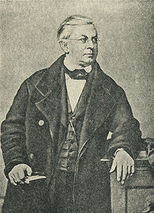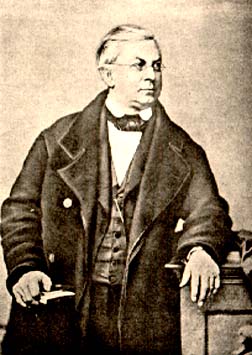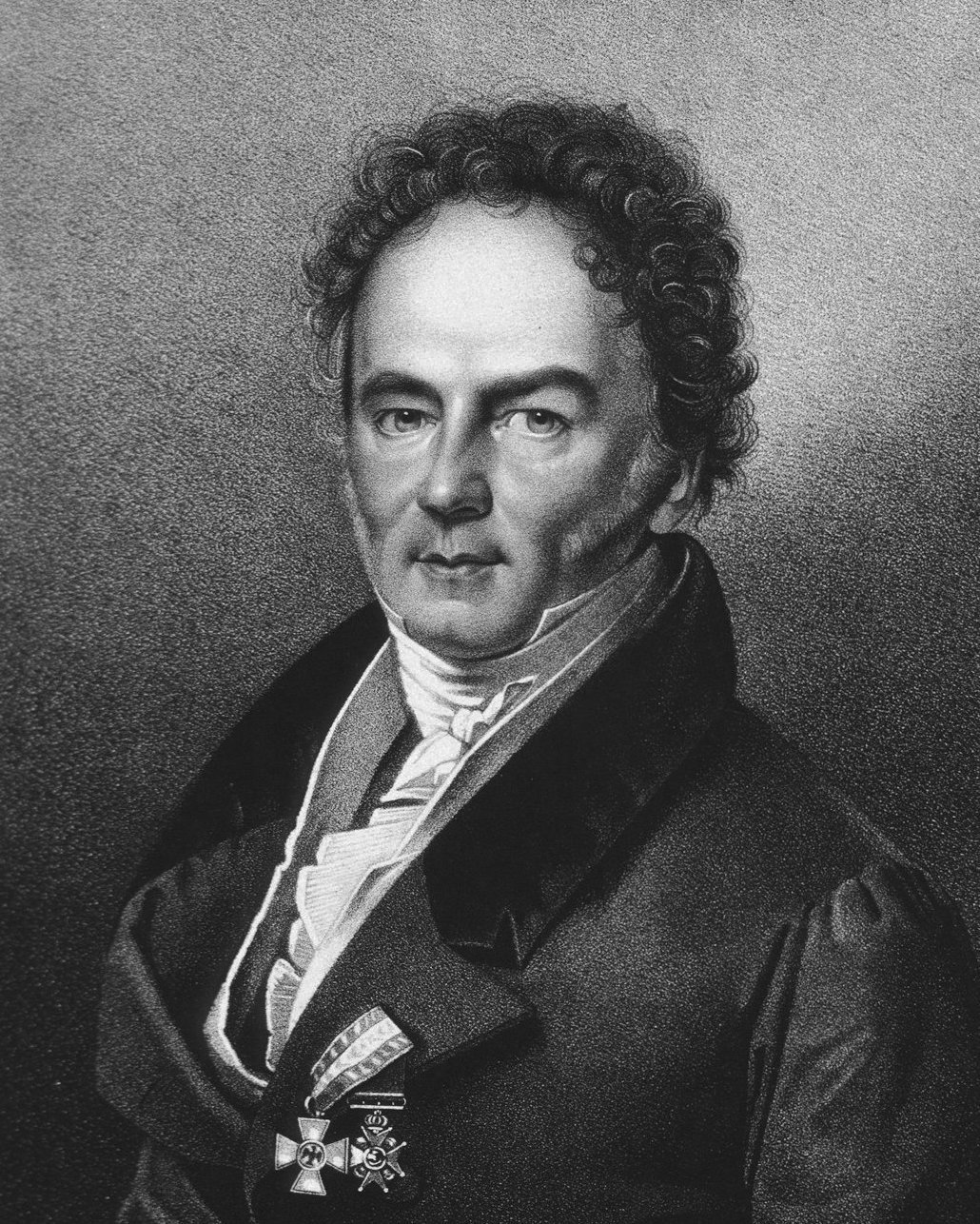Karl Theodor Ernst von Siebold
Carl Theodor Ernst von Siebold ( born February 16, 1804 in Würzburg, † April 7, 1885 in Munich) was a German physician and zoologist.
Life
Siebold comes from a family of doctors Würzburg. His parents were Sophie von Siebold and Adam Elias von Siebold, they moved in 1816 from Würzburg to Berlin. His father was a professor of obstetrics at the University of Würzburg. Even the brother Eduard Caspar Jacob von Siebold (1801-1861) was a gynecologist.
From 1823 to 1828 Carl von Siebold studied medicine at the Friedrich- Wilhelms- University of Berlin and the Georg-August -Universität Göttingen. In Göttingen he worked extensively with the addition of Medicine Zoology. His dissertation was devoted to the metamorphosis (Zoology ) of the salamander.
He began as a district physician in the Masurian Heilenberg (1831 ) and in Königsberg in Prussia (1834 ). As director of the midwifery school in Gdansk, he started back to work intensively with the zoology. Comparative anatomical and zoological studies of marine animals were reflected in about 40 papers.
Through the mediation of Alexander von Humboldt received by Siebold in 1840 a reputation as a professor of zoology, comparative anatomy and veterinary science at the Friedrich -Alexander- University of Erlangen. In 1845 he moved to the Department of Zoology and Physiology, Albert- Ludwigs- University of Freiburg, 1850 as physiology professor at the Silesian Friedrich Wilhelm University in Breslau. He became in 1853 professor of comparative anatomy and zoology at the Ludwig- Maximilians- University of Munich and received in the same year the Bavarian Maximilian Order for Science and Art.
His marriage to Fanny Noeldechen the daughter Antonie emerged. Siebold was cousin of botanist Philipp Franz von Siebold.
Scientific Work
In addition to his university activities Siebold was also director of the zoological and anatomical collections in Munich, now the Zoological State Collection Munich ( ZSM ). In his zoological research Siebold primarily dealt with the native freshwater fish. So Siebold has the nerds ( zingel nerd ), a flow- loving Danube perch, " freshwater fish of Central Europe " in 1863 in his book scientifically. For the work on his book Siebold put on an extensive collection of native fish. Under his leadership, developed the zoological and anatomical collections from a " Naturalienkabinett " towards a research collection. Especially the fish collection was increased substantially by his own research. In addition to an extensive collection of fish skeletons Siebold built up a collection of anatomical preparations of fish, which he used for his university lectures.
Also under Siebold line was the comparative anatomical collection of the Anatomical Institute in Munich, which was housed in the Department of Physiology, transferred to the Wilhelminum, and merged with the zoological collections of the ZSM. A part of these combined collections were the public in the natural history collection in the old Wilhelminum in Neuhauser Straße in Munich accessible, which was also directed by Siebold.
Siebold was also earned the systematics and comparative anatomy of invertebrates. He recognized the protozoa as an independent group. With Hermann Friedrich Stannius (1808-1883), he wrote an extensive " Comparative Anatomy " ( 1854-1856 ).
After Siebold named taxa
The following taxa have been named in honor of Siebold after him:
- Enhydris sieboldi Schlegel, 1837 or Siebold's Water Snake
- Ergasilus sieboldi by Nordmann, 1832
- Lineola sieboldii ( Kölliker, 1845) Gerlach & Riemann, 1974
- Pegantha sieboldi ( Haeckel, 1879)
- Trichosphaerium sieboldi Schneider, 1878
- Stenostomum sieboldi of Graff, 1878
- Colobomatus sieboldi ( Richiardi, 1877)
- Hyalonema sieboldi Gray, 1835
Works
- Observationes de Salam Andris et Tritonibus. 1828th
- Contributions to the natural history of invertebrate animals. Danzig 1839.
- About the band and bladder worms. 1854
- True parthenogenesis in butterflies and bees. In 1856.
- The freshwater fishes of Central Europe. Engelmann, Leipzig 1863. Digitized and full text in German Text Archive
- Contributions to the parthenogenesis of the arthropods. In 1871.
- With Hermann Stannius: Textbook of comparative anatomy of vertebrate animals Lossen. Berlin 1845.









